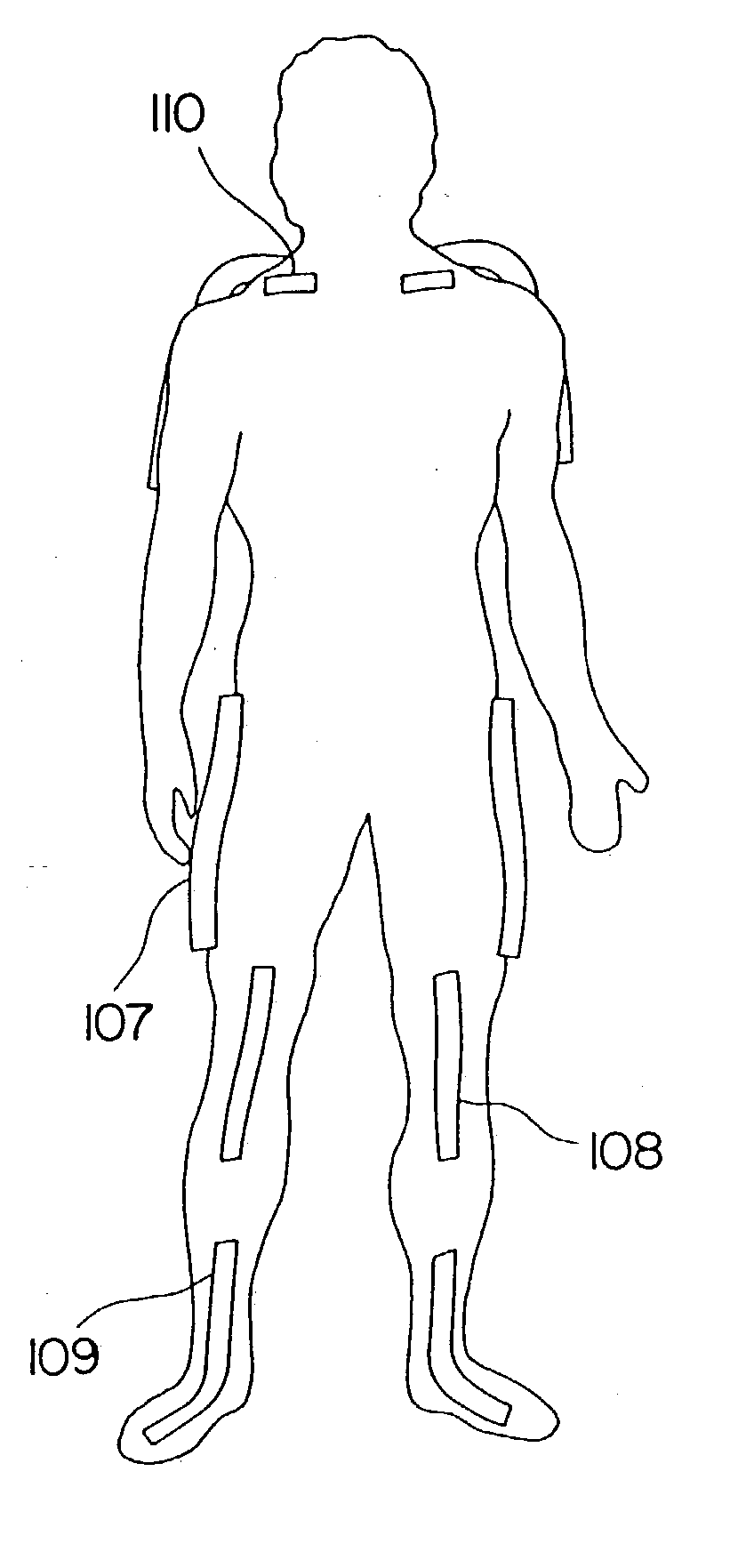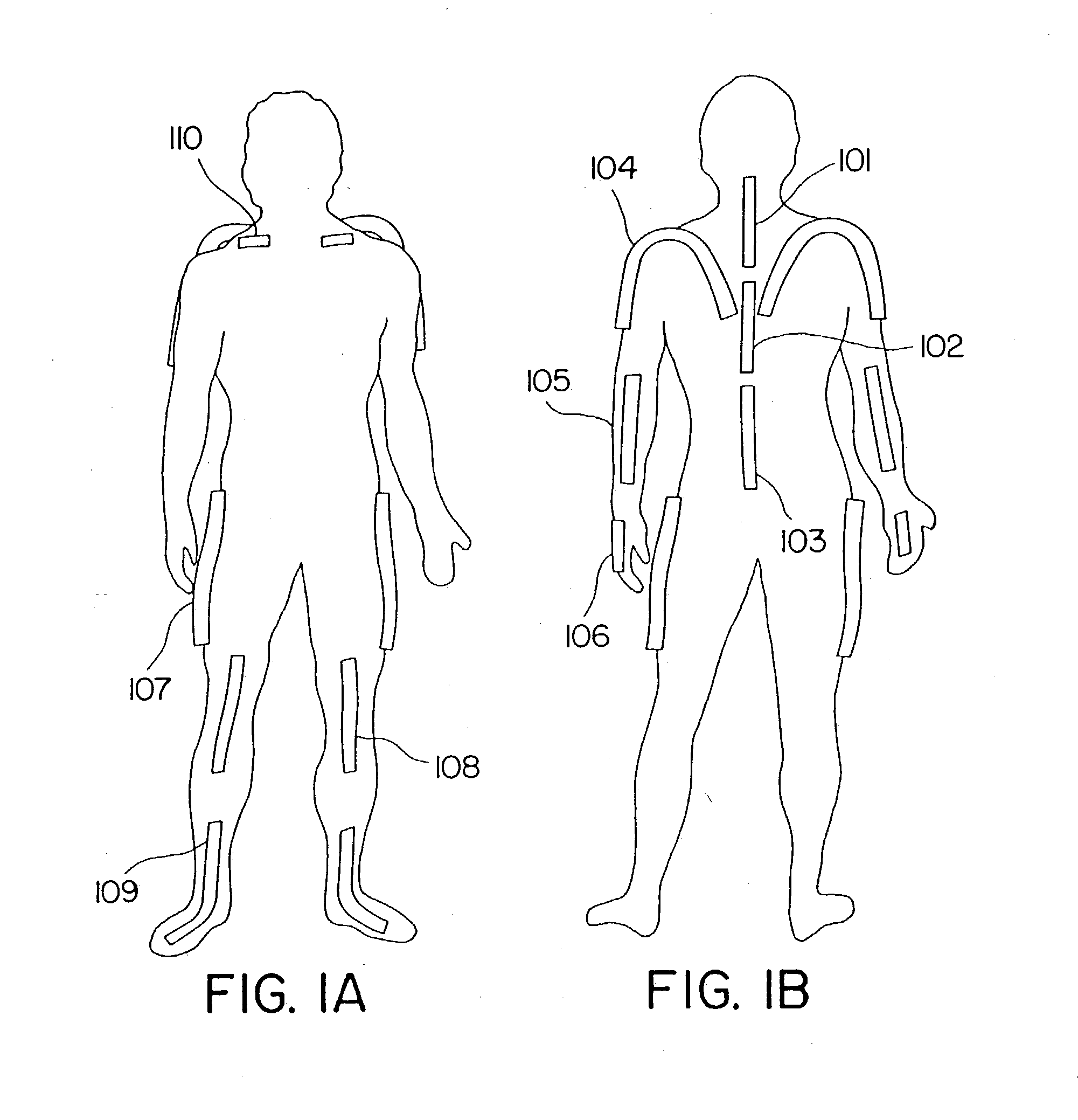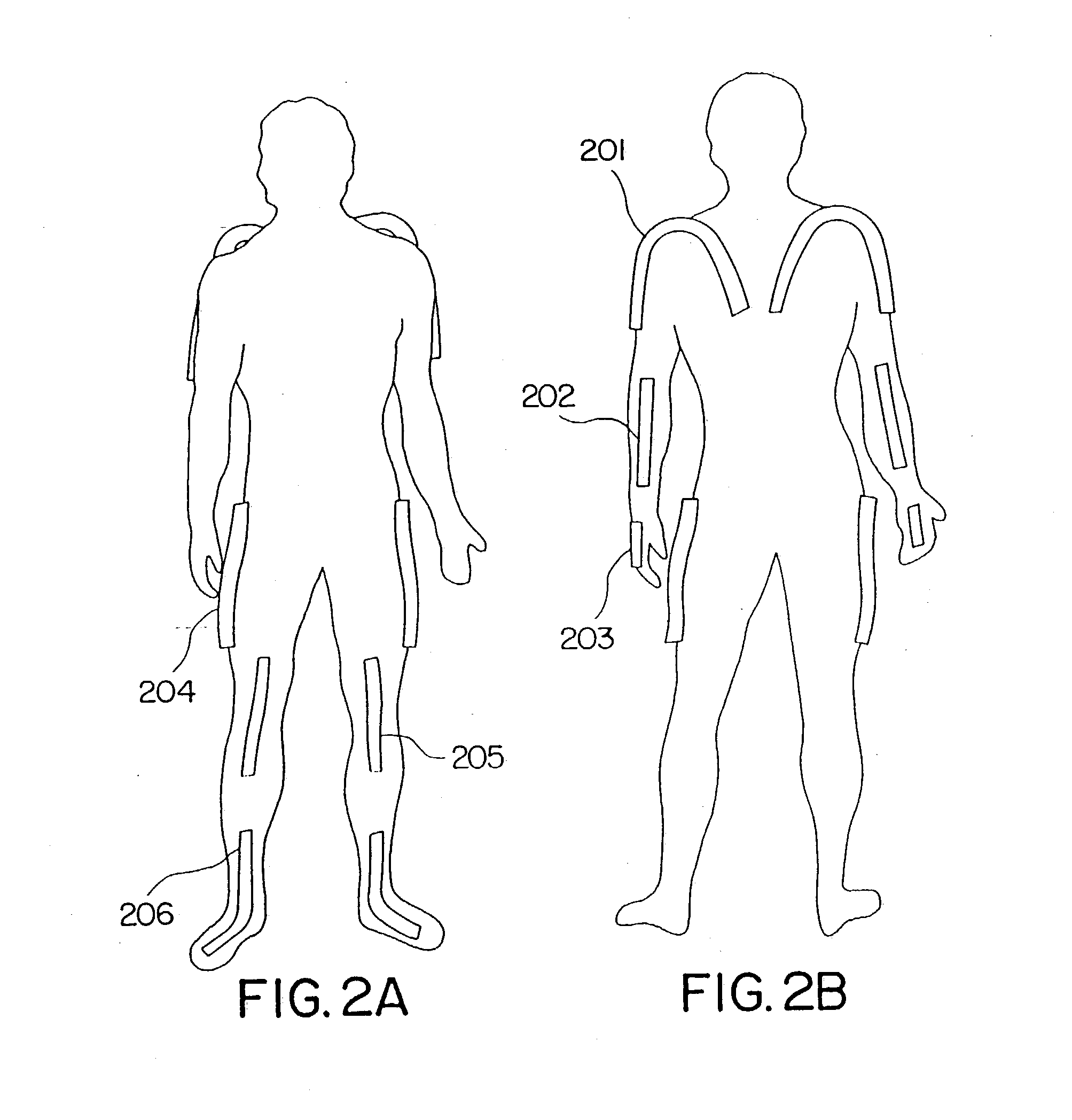Goniometer-based body-tracking device and method
a goniometer and body technology, applied in the direction of instruments, applications, person identification, etc., can solve the problems of lag time rendering the position data non-real time, limited work space, and both require direct line of sigh
- Summary
- Abstract
- Description
- Claims
- Application Information
AI Technical Summary
Problems solved by technology
Method used
Image
Examples
Embodiment Construction
[0081] The inventive structure and method are now described in the context of specific exemplary embodiments. For convenience, but not by way of limitation, the description is partitioned into a system overview, a description of the kinematic foundation of the mechanical components and assemblies, and a description of elements, components, sensors, assemblies, and the like corresponding to the attached figures.
[0082] We now describe an overview of the inventive system and apparatus. In accordance with the subject invention, apparatuses are provided which employ multiple links connected by revolute joints, for measuring body parts, usually human body parts. The link and revolute joint assembly has terminal links for fitting to mounts for the body parts. The mounts secure the terminal links to the body part to minimize movement of the terminal links independent of the movement of the body part. Sensors are provided, where the sensor may extend past a plurality of joints or the sensor ...
PUM
 Login to View More
Login to View More Abstract
Description
Claims
Application Information
 Login to View More
Login to View More - R&D
- Intellectual Property
- Life Sciences
- Materials
- Tech Scout
- Unparalleled Data Quality
- Higher Quality Content
- 60% Fewer Hallucinations
Browse by: Latest US Patents, China's latest patents, Technical Efficacy Thesaurus, Application Domain, Technology Topic, Popular Technical Reports.
© 2025 PatSnap. All rights reserved.Legal|Privacy policy|Modern Slavery Act Transparency Statement|Sitemap|About US| Contact US: help@patsnap.com



